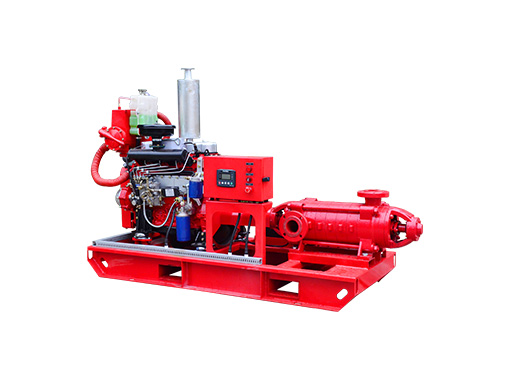
Head pressure refers to the energy a fire pump needs to move water vertically or horizontally through the fire protection system. It is measured in terms of the height (in meters or feet) that the pump can lift water, commonly called "head."
For fire pumps, head pressure is expressed in feet or meters of water column or converted into pressure units such as pounds per square inch (PSI) or bar. It indicates the pump’s ability to deliver water at the required flow rate, even in challenging conditions such as tall buildings or long piping systems.
Static Head
The vertical distance between the water source (e.g., tank or reservoir) and the highest point in the fire protection system.
Friction Loss
The resistance caused by water flowing through pipes, valves, and fittings. Longer piping systems or smaller pipe diameters increase friction losses.
Operating Pressure
The pressure needed to operate sprinklers, standpipes, or other fire protection devices effectively.
Discharge Head
The total energy required to overcome static head, friction loss, and operating pressure.
Ensuring Water Delivery at All Levels
In high-rise buildings or large industrial facilities, the fire pump must generate enough pressure to overcome the height of the structure and deliver water to the highest sprinkler or standpipe.
System Efficiency
Correctly calculating head pressure ensures the fire pump operates efficiently without wasting energy or risking inadequate performance.
Compliance with Standards
Fire protection standards like NFPA 20 require precise head pressure calculations to ensure the system meets safety requirements.
Preventing System Failures
Insufficient head pressure can result in poor water flow or dry sprinklers, while excessive pressure may damage pipes and equipment.
The formula for calculating total head pressure is:
Total Head (ft) = Static Head + Friction Loss + Operating Pressure
Convert Operating Pressure to Head
Add Static Head
Measure the height difference between the pump and the highest system point.
Include Friction Loss
Use a friction loss chart to determine losses based on pipe diameter, flow rate, and length.
Imagine a fire pump supplying water to a high-rise building with the following parameters:
Total Head:
The fire pump selected must generate at least 323.25 ft of head to ensure proper operation.
Fire pump head pressure is a critical factor in designing effective fire protection systems. Understanding and calculating head pressure ensures the pump delivers the right flow and pressure to meet system demands, protecting both life and property.
We offer fire pumps tailored to your specific head pressure requirements. Contact us today for expert advice and high-performance solutions that meet your safety needs!